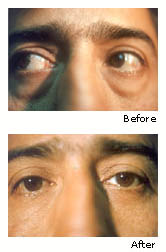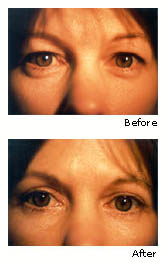There are many types of surgeries applicable to the eyelids that may be evaluated by an expert witness. Some of the most common surgical procedures involve procedures to alleviate droopiness of the upper eyelids, removal of bagginess of the lower eyelids, correction of eyelid inversion (entropion), or correction of eyelid eversion (ectropion). In addition, reconstructive eyelid surgery may be performed to remove skin tumors that involve either the upper or lower eyelid, or to correct deformities from trauma. An eyelid surgery expert witness is often consulted when complications arise.

Every year millions of patient seek eyelid surgery to improve their peripheral vision or appearance. Droopy upper eyelids can impair vision when they droop to a level that blocks vision. The presence of droopy upper eyelids is known as ptosis. Patients may also have redundant folds of upper eyelid skin or unsightly fat. These patients often have eyelid surgery performed to improve their appearance. When eyelid surgery is performed strictly for appearance purposes it is called cosmetic surgery. Patients who have eyelid surgery to improve peripheral vision will often benefit from an improved cosmetic appearance.
The degree of vision impairment from droopy upper eyelids may be measured preoperatively by a visual field test. This is a subjective test that is heavily dependent on patient understanding and cooperation. In general, visual field testing involves a light projected at various points in a patient’s visual field. When a patient recognizes the light target, he presses a handheld clicker. The patient’s response is then tabulated and displayed as a map. A machine (perimeter) usually performs visual field testing.

Pre-operative testing by an ophthalmologist usually involves testing best-corrected visual acuity, photographs documenting the condition of the eyelids, and a general assessment of a patient’s eye status.
Eyelid surgery is usually performed on an out-patient basis. Local anesthetic is infiltrated in the area of surgery to minimize discomfort. Often, a marking pen is utilized to outline excessive skin. Upper eyelid surgery involves removal of excessive skin, excessive fat, and excessive muscle. The amount of removal is influenced by a patient’s goals and the feasibility of acquiring those goals. Lower eyelid surgery can be performed through the skin surface, or from behind the lower lid (transconjunctival approach). The transconjunctival approach may be more challenging then the skin approach, but the advantage is that there are no sutures and no skin incision to heal after surgery.
Complications of eyelid surgery
- Adverse reaction to anesthesia.
- Scar tissue resulting in functional or cosmetic deformity.
- Injury to eye muscle resulting in double vision.
- Loss of vision from excessive bleeding and pressure on the optic nerve.
- Undercorrection or overcorrection requiring additional surgery.
Cases in Point
Dr. Reynard was retained to evaluate causation and functional impairment in a patient who suffered blindness after blepharoplasty of the upper and lower eyelids.
Dr. Reynard was retained by a city attorney to evaluate alleged work disability following an orbital blow-out fracture with double vision.
Dr. Reynard was retained by a medical liability insurance carrier to assess causation and damages for a patient who was unable to fully close eyelids following eyelid surgery.